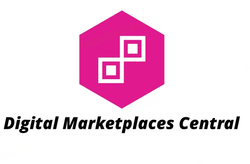Step into a world where boundaries dissolve, and possibilities become limitless. Virtual Reality technology has revolutionized the way we experience life, pushing the boundaries of imagination and captivating our senses in ways we never thought possible. While VR is commonly associated with gaming and entertainment, its potential extends far beyond that. In fact, forward-thinking businesses are harnessing the power of VR to enhance their B2B sales presentations, creating immersive experiences that captivate clients and drive results like never before. Strap on your headset as we delve into the exciting realm where virtual reality meets business-to-business sales!
The use of VR in B2B sales presentations
Virtual Reality has revolutionized the way businesses approach sales presentations, particularly in the B2B sector. By incorporating VR into their pitches, companies can create immersive and interactive experiences for potential clients, making it easier to showcase products or services.
One of the main advantages of using VR in B2B sales presentations is that it allows clients to visualize complex concepts or designs in a more tangible way. Instead of relying on static images or verbal explanations, VR enables customers to step into a virtual environment and explore products from different angles. This level of interactivity not only enhances understanding but also leaves a lasting impression on clients.
VR provides an opportunity to demonstrate how products work in real-world scenarios without actually having them physically present. For example, architects can use VR technology to give prospective clients virtual tours of buildings that haven’t been constructed yet. This kind of visualization helps decision-makers feel more confident about investing in a particular product or service.
Several companies have successfully implemented VR into their B2B sales process with impressive results. For instance, Volvo employs VR headsets during its sales presentations for heavy machinery. Potential buyers can experience operating construction equipment virtually before making purchasing decisions. This hands-on experience significantly boosts customer engagement and confidence in Volvo’s offerings.
Using high-quality visuals and realistic simulations is crucial for creating an immersive experience through VR technology. Attention should be given not only to graphical fidelity but also sound design since audio cues contribute significantly to overall immersion.

Advantages of using VR in B2B sales presentations
Immersive and engaging experiences: One of the biggest advantages of using VR in B2B sales presentations is the ability to create immersive and engaging experiences for potential clients. With VR, you can transport your audience into a virtual environment where they can interact with your products or services in a way that feels real. This level of immersion helps capture their attention and leaves a lasting impression.
Enhanced visualization: VR allows for better visualization of complex concepts or products. Whether it’s showcasing architectural designs, industrial machinery, or medical equipment, VR enables potential clients to see detailed 3D models from every angle. This not only helps them understand the features and functionality better but also facilitates more informed decision-making.
Remote collaboration: Another advantage of using VR in B2B sales presentations is its ability to facilitate remote collaboration. With virtual reality technology, you can conduct interactive meetings or product demos with clients located anywhere in the world. This eliminates geographical barriers and saves both time and costs associated with travel.
Customizability: Virtual reality offers endless possibilities for customizing sales presentations according to specific client needs. You can tailor the content, visuals, and interactions within the virtual environment to align with each client’s unique requirements and preferences. This personalization creates a sense of exclusivity and demonstrates your commitment towards meeting their individual needs.
Increased conversion rates: One of the key advantages of using VR in B2B sales presentations is its potential to increase conversion rates significantly. The immersive nature of virtual reality combined with enhanced visualization capabilities fosters deeper engagement with prospects leading to higher chances of closing deals successfully.
Tips for creating effective VR sales presentations
Creating effective VR sales presentations requires careful planning and execution. Here are some tips to help you make the most out of this immersive technology:
1. Know your audience: Understand who you’re presenting to and tailor your VR experience accordingly. Consider their industry, preferences, and specific needs to ensure maximum engagement.
2. Define clear objectives: Determine what you want your audience to take away from the presentation. Are you showcasing a product’s features or demonstrating its use? Clarifying your objectives will guide the content creation process.
3. Keep it concise: VR experiences should be short and focused, capturing attention without overwhelming viewers. Avoid unnecessary distractions or lengthy explanations that could detract from the main message.
4. Highlight key features: Use VR to showcase unique aspects of your product or service that set it apart from competitors’. Whether it’s interactive simulations or 360-degree visualizations, emphasize what makes your offering valuable.
5. Incorporate interactivity: Increase viewer engagement by allowing them to interact with elements within the virtual environment – whether it’s manipulating objects, exploring different scenarios, or making choices that affect outcomes.
6. Test for usability: Before launching a VR sales presentation, thoroughly test its usability on various devices and platforms to ensure smooth functionality across different setups.
7. Leverage storytelling techniques: Craft compelling narratives within the virtual space to captivate viewers’ emotions and immerse them in memorable experiences that resonate long after they’ve removed their headsets.
8. Get feedback and iterate:Get input from users who have experienced your presentation,and incorporate their suggestions into refining future versions of your VR sales pitch.
Challenges and limitations of using VR in B2B sales
While Virtual Reality technology has the potential to revolutionize B2B sales presentations, it also comes with its fair share of challenges and limitations. One major hurdle is the cost associated with implementing VR solutions. The hardware, software development, and training required can be quite expensive for businesses, especially small to medium-sized enterprises.
Another challenge lies in creating compelling content for VR sales presentations. It requires a different approach compared to traditional sales materials. Companies need to invest time and resources into developing immersive and interactive experiences that truly showcase their products or services.
There may be resistance from clients who are unfamiliar or skeptical about using VR in a business context. Some decision-makers may prefer more conventional methods of presentation or feel overwhelmed by the technology itself.
Technical difficulties can arise during live demonstrations or remote presentations using VR. Connectivity issues or glitches could hinder the smooth delivery of a sales pitch, potentially damaging the overall effectiveness of the presentation.
Despite these challenges and limitations, many companies have successfully integrated VR into their B2B sales strategies by carefully addressing these obstacles head-on. As technology advances and becomes more accessible, we can expect these hurdles to diminish over time.
Future possibilities and potential developments in VR for B2B sales
The future of virtual reality in B2B sales holds immense promise and potential. As technology continues to advance, we can expect exciting developments that will further enhance the effectiveness of VR sales presentations.
One area where we may see significant growth is in the customization of VR experiences. Companies will have the ability to tailor their presentations to individual clients, creating immersive environments that showcase their products or services in a way that is relevant and engaging. This level of personalization can help build stronger connections with potential buyers and increase conversion rates.
Another exciting possibility is the integration of artificial intelligence (AI) into VR sales presentations. AI-powered virtual assistants could assist sales professionals by providing real-time data, answering customer questions, and even analyzing buyer behavior during the presentation. This would enable companies to gather valuable insights and make data-driven decisions to improve their sales strategies.
Advancements in haptic feedback technology could further enhance the VR experience for B2B sales presentations. The ability to touch and feel virtual objects would provide a more realistic sensory experience for customers, allowing them to interact with products as if they were physically present. This level of immersion has great potential for industries like manufacturing or construction where physical prototypes are costly or impractical.
While these possibilities are still on the horizon, it’s clear that there is an exciting future ahead for VR in B2B sales presentations. As technology continues to evolve rapidly, businesses must stay informed about these developments and be ready to embrace new opportunities that arise along the way.
Conclusion
Virtual Reality technology has transformed the way B2B sales presentations are conducted. By immersing potential clients in a realistic and interactive virtual environment, VR enhances engagement, understanding, and decision-making processes.
The use of VR in B2B sales presentations offers numerous advantages. It allows businesses to showcase their products or services with greater impact and effectiveness. The immersive experience enables potential customers to visualize how the product or service will benefit them in real-life situations. This level of interactivity creates a memorable experience that sets businesses apart from their competitors.
Several case studies have highlighted the success of companies implementing VR in their sales process. For example, Volvo uses VR to provide an immersive experience for potential car buyers, allowing them to explore different models and customize features virtually. This has resulted in increased customer satisfaction and higher sales conversion rates.
Despite its many benefits, using VR in B2B sales also comes with challenges and limitations. The cost associated with developing customized VR experiences can be significant for some businesses. Additionally, not all industries may find value in using this technology for their specific sales processes.
Looking ahead, there are exciting possibilities for further development of VR technology in B2B sales presentations. As advancements continue to drive down costs and improve accessibility, more businesses will be able to leverage this tool effectively.



